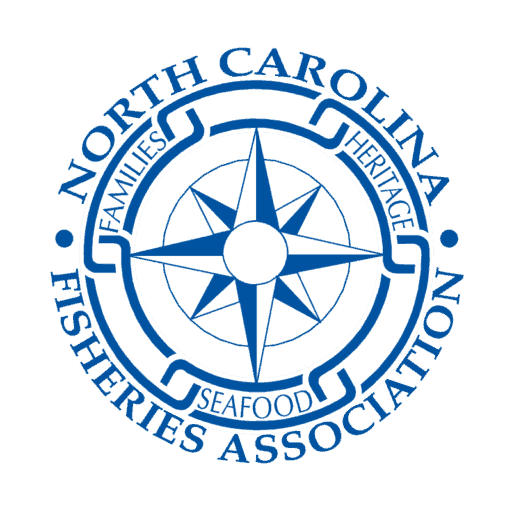The Saga of Southern Flounder, The rest of the story
I hope everyone took the time to read the “Saga of Southern Flounder” article, from the North Carolina Wildlife Federation. If not please click the link below and read it for yourself before continuing to read my comments.
After reading the Wildlife Federations article, I’m sure you were shocked by their strong claims of (mis)” management”, bias towards the commercial fishery, failed commercial management, and harsh recreational reductions.
But once again, are they true?
The answer is yes and no. While their primary claims are absolute lies the numbers (mis) used to support these claims are mostly accurate. You’re probably thinking, the numbers are accurate, but the conclusions are false? That doesn’t make sense!
Let me explain.
There are many ways that the best available data can be used to mislead and misinform, and the Wildlife Federation excels at every one of them. For example, one can simply state a fact with no other supporting information, leading readers to a false assumption, without actually lying.
The following statement is a good example of how the Wildlife Federation used this tactic to mislead their readers without actually lying. “The (southern flounder) plan adopted a 15.1% reduction for the commercial fishery and a 30.5% reduction for the recreational fishery.” The statement is true but, by leaving out all other pertinent information, the reader is lead to the false conclusion that the realized reductions have been more significant in the recreational sector. As I pointed out last week the number of flounder killed by the recreational sector has not been successfully reduced through the FMP, but the commercial numbers have been significantly reduced.
This same tactic was employed when they note that in 2006, only a 17.2% reduction was necessary to rebuild the stock, but it now requires a 72% reduction to rebuild the fishery to statute requirements. While this simple statement contains a grain of truth it is, without a doubt, one of the most deceptive claims ever made about fisheries management in N.C.
The Southern Flounder FMP was adopted in 2005, not 2006, and at the time it was determined that an 18% harvest reduction, not 17.2%, would end overfishing in 5 years (2005-2009). The commission adopted a 17.2% reduction, and at the five year review, in 2010, we were at a 19% spawning potential ratio (SPR) , just 1% away from the overfishing threshold of 20% SPR. At that time, through Amendment 1, the DMF/MFC decided to raise the threshold from 20% SPR to 25%, effectively raising the bar (reduction), NC fishermen and anglers had to clear, to end overfishing.
In addition to raising the threshold, they also changed the unit, used to determine overfishing from pounds harvested to numbers of fish harvested, again slightly increasing the necessary harvest reduction. At that time, it was determined that by simply using numbers rather than pounds the necessary reduction increased from 19.7% to 20.5% with a 14-inch size limit and from 29.9% to 30.6% with a 15-inch size limit.
That’s right, not only can changing the unit from pounds to numbers, and raising the threshold increase the necessary reductions, but also by simply raising the minimum size limit, they can significantly increase the necessary harvest reductions, and we all know what the current size limits are.
You may have also noticed that the Wildlife Federation vaguely mentioned “statute requirements” when talking about the recent required reduction of “72%” but made no mention of statutes when the necessary reduction was only “17.2%.” That’s because those statutory requirements did not exist in 2005, when the FMP was adopted, but were in place from Amendment 1 on.
Under these new statutes the commission has to adopt management measures that have at least a 50% probability of ending overfishing in 2 years and achieving sustainable harvest within 10 years. Had these statutes and the other changes mentioned above, been in place in 2005, the necessary harvest reductions would have been much greater than 17.2%, probably much closer to the 52% reduction now required to these new requirements.
52%?
Did I forget to mention that a 52% reduction, not 72%, gets us to the threshold within the statutory requirements? That’s correct, the 72% reduction goes above and beyond the 25% SPR threshold and shoots for a target SPR of 35%, increasing the necessary reduction by 20%.
As you can clearly see, by omitting a few key pieces of information, the Wildlife Federation can lead readers to conclude that mis-management and a collapsing stock are to blame for the harsh reductions, when in reality, changes supported by the groups like the NCWF and CCA are mostly to blame.
Another tactic commonly used by the Wildlife Federation is to “cherry pick” the data. Simply put, by handpicking the years or parameters of the data they present to the public, they can make the data fit the message they want readers to take away from their article.
Let me show you how it works.
The Wildlife Federation stated that “from 2013 to 2018, Southern Flounder commercial harvest declined from 2.2 million pounds to 900,000 pounds and recreational harvest declined from 869,223 pounds to 495,289 pounds.” Again, the numbers are somewhat accurate but by cherry picking the data they can craft their false claims around real data, giving the appearance of validity.
First, by choosing to use harvest data rather than total removals, they exclude dead discards, minimizing the recreational numbers while still capturing 99.7% of the total commercial removals. It also doesn’t hurt that they only used hook and line harvest data, excluding the pounds of flounder harvested by the recreational gig fishery, further reducing the appearance of the recreational impact.
Second, they have to choose the appropriate years, 2013 and 2018, to fit their desired message. 2013 was chosen because it was the most recent, and only year since 2009, where the commercial harvest exceeded 2 million pounds. 2013 also had a relatively high commercial to recreational harvest ratio which supports their claims that commercial fishing is the problem.
On the other hand, 2018 was picked because of the extremely low level of harvest that occurred that year as a direct result of the impacts from Hurricane Florence and again the right commercial to recreational harvest ratio.
Other years simply don’t fit the Wildlife Federations chosen message. For example, 2016 had similar commercial harvest at 897,765 pounds, due to Hurricane Matthew, but the recreational harvest, at 813,687 pounds, was too high to fit their chosen message.
Afterall, it would be hard for them to convince readers that the stock was collapsing as a direct result of commercial over harvest, when the recreational sector accounted for nearly 50% of the overall harvest and their numbers didn’t decline at the same rate seen in the commercial fishery.
In 2013 and 2018, the Wildlife Federation found the proper commercial to recreational harvest ratio and dramatic short-term decline they needed to create the appearance of commercial overharvest and a stock facing imminent collapse.
Clever, isn’t it?
I could do this all day, but you get the idea, if you see fisheries data made public by the NCWF it’s safe to assume that it doesn’t tell the whole story.
But why would the North Carolina Wildlife Federation show, what appears to be, such a heavy bias towards protecting the interest of the recreational fishery?
Are they a legitimate conservation organization or just another recreational fishing club?
Anyone who tells you the true goal of the North Carolina Wildlife Federation is conservation of our fisheries resources, rather than allocation of those resources, is either a fool or a liar! Their clever but deceptive messaging strategy proves their no fool, and with your help we’ll expose them for what they truly are.
These are just the facts regarding how one organization has (mis) informed the public about the management of one species over the years. Stay tuned for more….
Next week we’ll put their claim that “Amendment 2 is the first known effort to effectively reduce harvest in the commercial southern flounder fishery in history” to the test!
UPDATE for 1.24.2022
GENERAL ASSEMBLY:
The General Assembly met for one day last week to vote on one bill. The bill, H-605, would delay the primary election until June 7th. As of now, North Carolina primaries are scheduled for May. Originally slated for March, the date is of concern due to lawsuits filed over redistricting. A three-member Superior Court panel ruled unanimously that the new districts are Constitutional, but that ruling was appealed to the state Supreme Court which is due to hear oral arguments in the case February 2nd.
H-605 passed the House and Senate on Wednesday on a party line vote and sent to Governor Cooper. It is unclear what action he may take.
God bless,
Jerry
Alaska Marine Safety Education Association (AMSEA)
2924 Halibut Point Rd.
Sitka, AK 99835
AMSEA is conducting a Marine Safety Instructor Training class in Morehead City, Feb. 28 – Mar. 4, 2022
Prepare to make a difference. Learn to teach commercial fishermen the skills they need to survive emergencies at sea. Scholarships are available for qualifying commercial fishermen. Call (907) 531-1715 for info or follow the link below!
https://www.amsea.org/morehead-city-nc-msit

